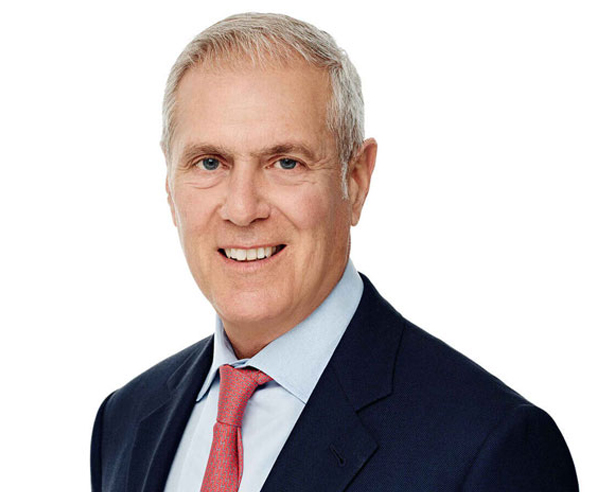News December 18, 2023
Investors, Board Clash Over Ousting of Former Gildan CEO Glenn Chamandy
Some shareholders want Chamandy reinstated and the current chairman of the Top 40 supplier’s board removed. Meanwhile, the board has sought to bulwark its position with a support agreement with the company’s second-largest investor.
UPDATE Wednesday, Dec. 20 1:30 p.m. Eastern
Since the below report published Monday, Dec. 18, there has been more fallout. Read our Dec. 20 article – “Gildan Board Slams Chamandy, Seeks To Assuage Investors as CEO Firing Fallout Persists” – for more information.
A corporate feud appears to be underway between Top 40 supplier Gildan’s (asi/56842) board of directors, former CEO Glenn Chamandy, and major investors in the publicly traded company.
The board last week announced that Chamandy had “left” the company he co-founded, and that former Fruit of the Loom and Broder Bros. executive Vince Tyra would be the Montreal-headquartered firm’s next president/CEO.
Chamandy, however, said that he’d had no intentions of retiring now and that the board had forced him out.
Top 40 #promoproducts supplier Gildan says longtime CEO/President Glenn Chamandy left the company, but the executive maintains he was fired. His replacement is a former CEO of Broder Bros. Details:
— Chris Ruvo (@ChrisR_ASI) December 11, 2023
Glenn Chamandy Out At Gildan; New CEO/President Named https://t.co/xRivxbN4hQ
Investors Call for Chamandy’s Return
Certain key investors took issue with Chamandy’s alleged ouster.
Last week, five investment firms that reportedly hold about 25% of Gildan’s shares denounced the board’s decision to do what they described as prematurely dismiss Chamandy. Gildan’s stock slipped 7% last week, dropping the company’s market capitalization to about $6 billion as of Friday. The stock was trading down again early Monday, Dec. 18.
The dissenting firms included Jarislowsky Fraser Ltd., Pzena Investment Management Inc., Browing West, Turtle Creek Asset Management, and Cooke & Bieler LP.
A common theme was that Chamandy has been at the forefront of growing Gildan into a multibillion-dollar vertically integrated manufacturer of apparel basics since he co-founded the company in the 1980s. The “succession” to a new CEO felt forced and ill-handled, the investment firms said.

Glenn J. Chamandy
“We were alarmed that the board abruptly terminated Mr. Chamandy as CEO – without cause or a viable explanation,” Browning West said. “The board’s poor handling of succession and questionable judgment when it comes to its most important responsibility and decision have put Gildan’s business and shareholders at great risk.”
Some shareholders, including Browing West and Cooke & Bieler, not only want Chamandy reinstated, but also current Gildan Chairman Donald C. Berg removed from the board of directors.
“We enthusiastically support Mr. Chamandy’s reinstatement as CEO, and we do not see that tenable with Mr. Berg on the board,” William Weber, a partner with Cooke & Bieler, told Fashion Network.
Gildan’s Board Responds
Following the investor outcry, Gildan director Luc Jobin told media members, such as The Globe and Mail, that the board removed Chamandy after the former CEO issued an ultimatum, essentially demanding that the company undertake several multibillion-dollar acquisitions of companies not within its main manufacturing business. Jobin didn’t name what companies Chamandy allegedly wanted to buy, but characterized the moves as high-risk.
“Glenn basically said: ‘Listen, either you accept the plan and you have to get back to me within a matter of weeks or … I will leave and you can terminate me,” Jobin said. “He was absolutely breathing heavy on the board.”
In a statement issued Monday, Dec. 18, Chamandy asserted that he never issued an ultimatum on strategy or potential acquisitions.
He called Jobin’s comments “a sideshow to distract from the reaction the shareholders have had with respect to the board’s handling of succession planning, in which I was not involved. I did not and could not orchestrate or control the events; the board conducted the process.”
Analysts noted that the investors that have come out in favor of Chamandy could potentially hold enough sway to seek a shareholder meeting to change the board of directors in favor of leaders that would be amenable to the former CEO’s return.
“I do believe it is essential that a leadership transition be conducted in a manner consistent with Gildan's successful track record,” said Chamandy. “Preserving our talent, culture and expertise – the pillars of our success – is vital. Obviously, considering shareholder engagement is integral to the decision-making process.”
In a statement, Berg said there was “misinformation” being spread about the board’s decision to appoint Tyra to the chief executive role.
“Our succession plan has been a multi-year, careful and deliberate process which included the former CEO at appropriate times throughout the process,” Berg said. “It resulted in a well-thought-out rationale for the board’s unanimous decision to appoint Vince Tyra as the new CEO.”
Moving to shore up shareholder allies, Gildan announced Dec. 17 that it had forged a support agreement with Coliseum Capital Management, the company’s second-largest investor.
Per the deal, Coliseum will support Gildan’s full slate of board nominees at the 2024 and 2025 shareholder meetings. The firm will also purchase more Gildan shares. Chris Shackelton, co-founder and managing partner of Coliseum, joined the Gildan board effective immediately following the Sunday announcement.
“With the support of one of our largest shareholders, we will continue our outreach to other shareholders to ensure the facts and conclusions surrounding the succession process are transparent, as well as the board’s confidence in Gildan’s trajectory,” said Berg.
Based on estimated 2022 North American promotional product revenue of $762.2 million, Gildan ranked fifth on Counselor’s most recent list of the largest suppliers in the industry.
Across all its business channels, including promo and others, Gildan tallied record total revenue of $3.24 billion in 2022. Through the first nine months of 2023, the company’s sales were down 4.3% compared to the prior year. Chamandy attributed the drop, in part, to what he characterized as a kind of correction in demand that followed a rampant stock-up by customers in 2022 following inventory shortfalls in 2021.
